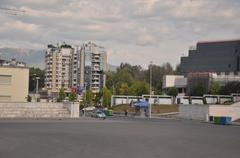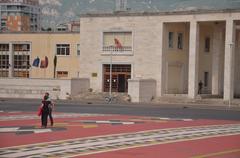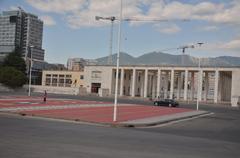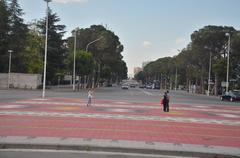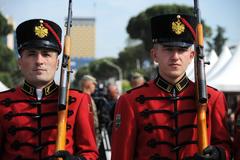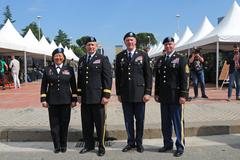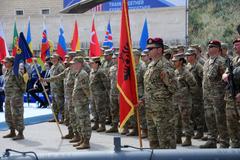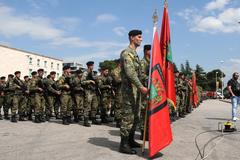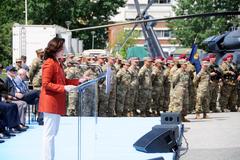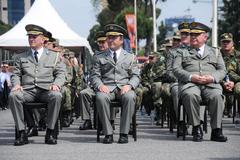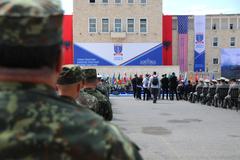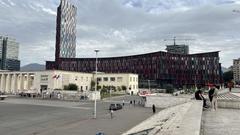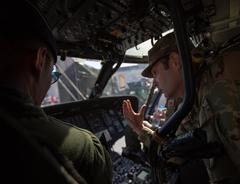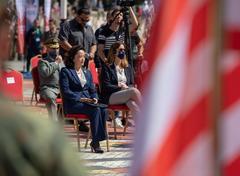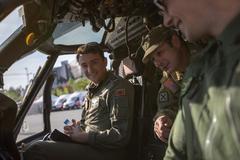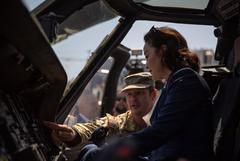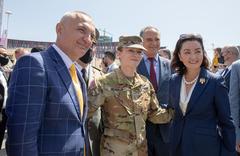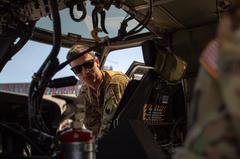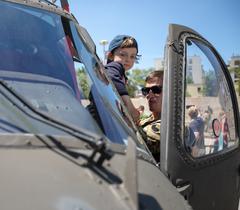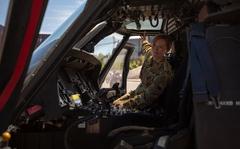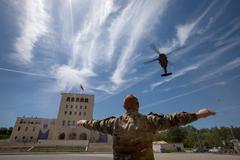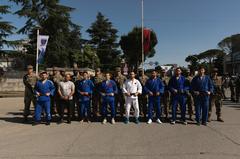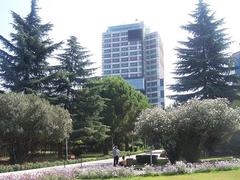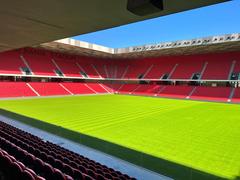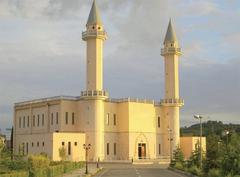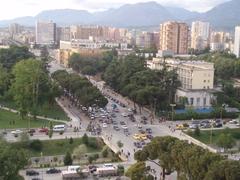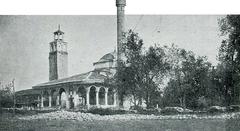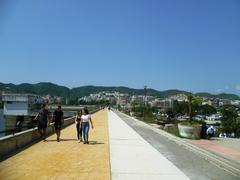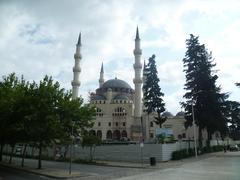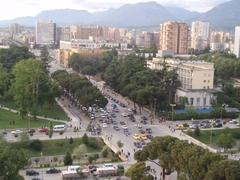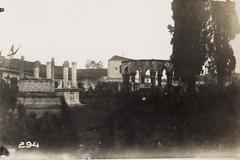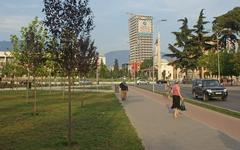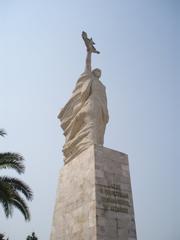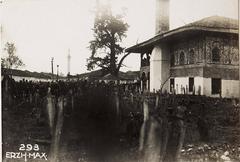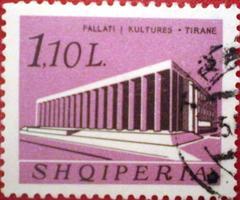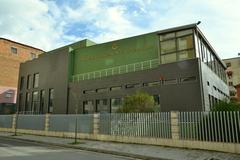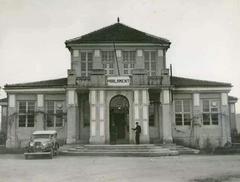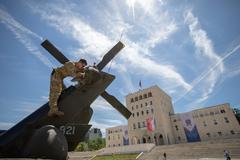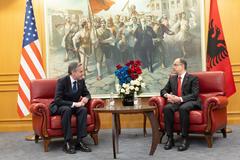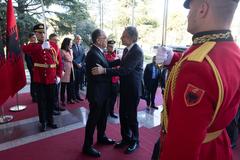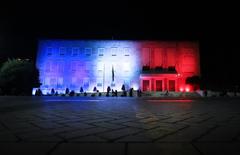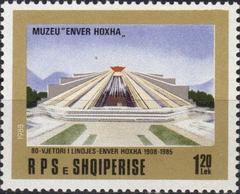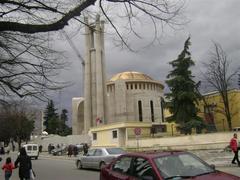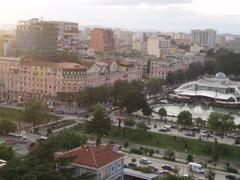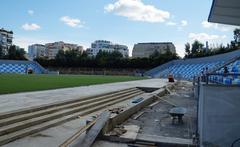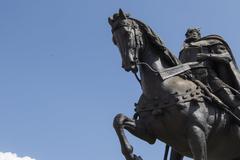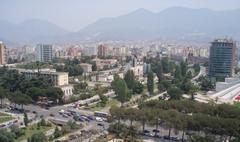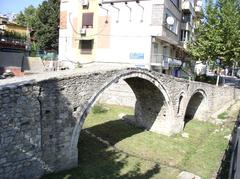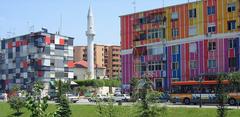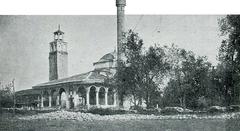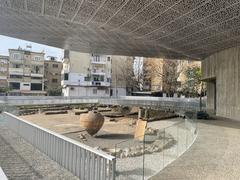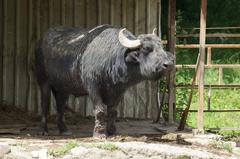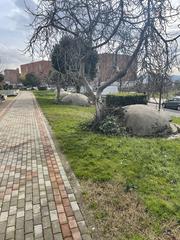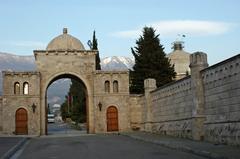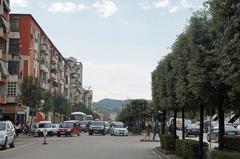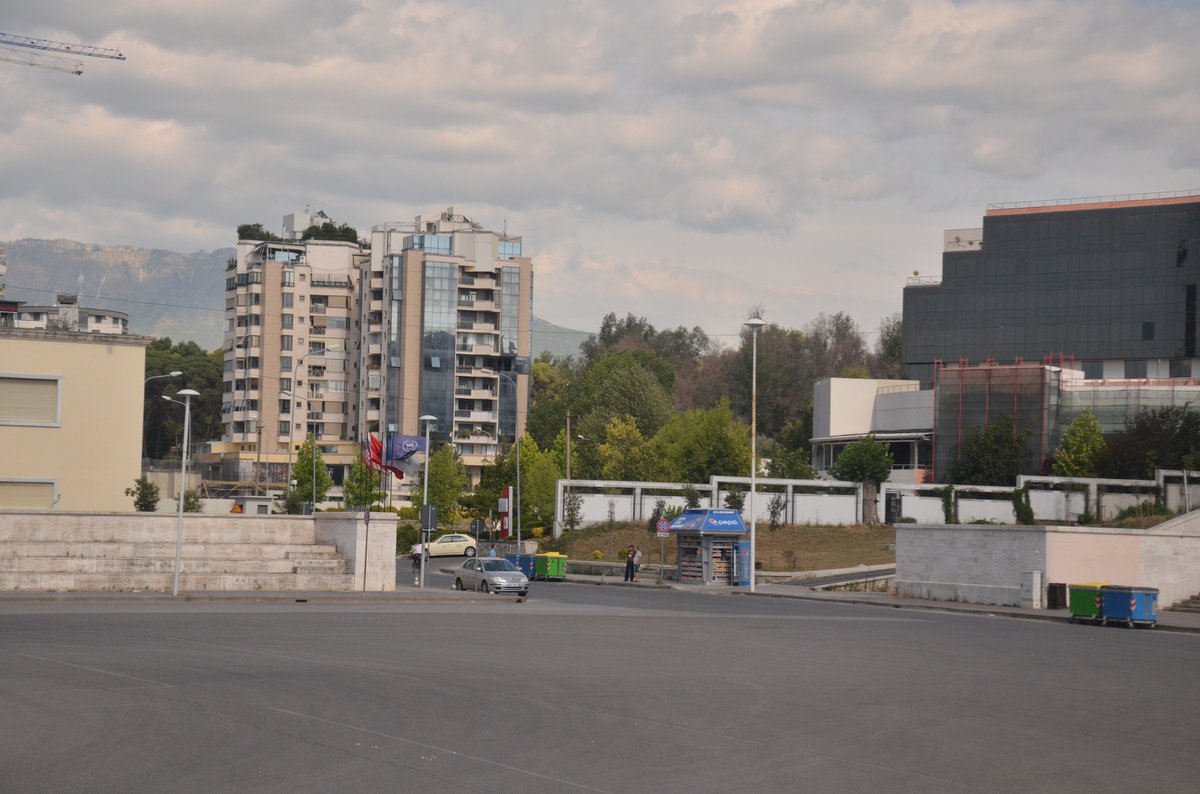
Mother Teresa Square Tirana: Visiting Hours, Tickets, and Travel Guide
Date: 14/06/2025
Mother Teresa Square (Sheshi Nënë Tereza) is a centerpiece of Tirana’s urban life, blending historical significance, monumental architecture, and vibrant cultural activities. Named after the Nobel Peace Prize laureate of Albanian descent, the square is not only a tribute to humanitarian legacy but also a hub for education, culture, and public events. This comprehensive guide covers the square’s origins, practical visitor information, nearby attractions, and tips for an enriching visit.
Table of Contents
- Introduction & Significance
- Historical Background
- Urban Setting and Architecture
- Practical Visitor Information
- Getting There
- Nearby Attractions
- Visitor Tips
- Frequently Asked Questions (FAQ)
- Conclusion
- References
Introduction & Significance
Mother Teresa Square stands as Tirana’s second-largest public plaza and a symbol of both national pride and urban transformation. Its central position at the southern end of Dëshmorët e Kombit Boulevard, proximity to major educational and cultural institutions, and role as a venue for festivals and civic events make it a must-visit for all travelers to Albania’s capital. The square’s open, pedestrian-friendly design invites locals and tourists alike to explore, relax, or participate in community life (Balkan Kaleidoscope, Visit Tirana).
Historical Background
Origins and Architectural Design
Mother Teresa Square was originally designed between 1939 and 1941 by Italian architect Gherardo Bosio, reflecting the Rationalist style of the era. Conceived as Piazza Vittorio Emanuele III during the Italian occupation, its clean geometric lines, pale stone surfaces, and monumental order reveal the political ambitions of its time. The square was planned as the grand terminus of Dëshmorët e Kombit Boulevard, reinforcing Tirana’s ceremonial and administrative core (EJ-Arch, Emerging Europe).
Political and Cultural Evolution
After World War II, the square underwent significant recontextualization. The communist regime removed its original name and introduced new public features, such as a prominent fountain in 1980. With the fall of communism in the 1990s, the square was renamed to honor Mother Teresa, symbolizing Albania’s renewed embrace of humanitarian values and national identity. A statue of Mother Teresa was installed, and the central fountain area was later transformed with vibrant public art installations, like the “Tirana sixhade,” inspired by traditional textiles (Wikipedia, Balkan Kaleidoscope).
Mother Teresa’s Legacy
Mother Teresa (Anjezë Gonxhe Bojaxhiu) was born to an Albanian family in Skopje and became renowned for her humanitarian work in India, earning the Nobel Peace Prize in 1979. Naming the square after her affirms both Albanian pride and universal humanitarian ideals. October 19, her beatification day, is a national holiday, and the square often hosts commemorative events (Visit Tirana).
Urban Setting and Architecture
Encompassing approximately 14,000 square meters, Mother Teresa Square’s rectangular layout extends the city’s main boulevard and is framed by the University of Tirana, Polytechnic University, University of Arts, and the National Archaeological Museum. The architectural ensemble features Rationalist symmetry, colonnades, and restrained ornamentation, while recent installations like the “Tirana sixhade” and the upcoming “Tirana Moons” art project reflect Tirana’s evolving urban identity (EJ-Arch, Citizens.al).
The square is a transition point from Tirana’s historic center to the Grand Park and artificial lake, with its monumental design symbolizing both authority and cultural continuity (Springer, Rough Guides).
Practical Visitor Information
Visiting Hours & Tickets
- Square Access: Open 24 hours a day, 7 days a week. No entrance fee.
- National Archaeological Museum: Located on the square, typically open 9:00 AM–5:00 PM, Tuesday–Sunday. Affordable admission; check the museum’s website for current prices.
Accessibility
Mother Teresa Square is fully pedestrianized, with flat surfaces and ramps making it wheelchair and stroller accessible. Its open layout ensures easy navigation for people with mobility challenges (visit.explore-albania.al).
Events, Tours, and Activities
- Guided Tours: Many local operators include the square in historical and cultural walking tours. Book online or at tourist information centers.
- Annual Events:
- Tirana International Film Festival (September)
- ColourDay Festival (May)
- Tirana Marathon (October)
- Public Art: Notable installations include the “Tirana sixhade” and, from 2025, the “Tirana Moons” interactive project.
For event schedules, check local calendars or the Visit Tirana website.
Getting There
- On Foot: The square is a 15-minute walk from Skanderbeg Square, easily accessible via Dëshmorët e Kombit Boulevard.
- By Public Transport: Multiple bus lines stop nearby.
- By Taxi/Car: Taxis can drop you directly at the square. Limited street parking is available, but walking or public transit is advised during events (visit.explore-albania.al).
Nearby Attractions
- University of Tirana: Facing the square, a hub of student activity.
- Polytechnic University & University of Arts: Contribute to the area’s academic energy.
- National Archaeological Museum: Features artifacts from Albania’s ancient and medieval history.
- Centre of Albanological Studies: Dedicated to Albanian culture and language.
- Grand Park of Tirana: Just south of the square, ideal for walks and relaxation.
- Qemal Stafa/AirAlbania Stadium: Four minutes away, combining sports and dining venues.
- Blloku District: Known for nightlife, cafes, and restaurants (roadtotheunknown.com).
Visitor Tips
- Best Time to Visit: Spring and early autumn for pleasant weather; evenings for illuminated architecture and relaxed atmosphere.
- Safety: The square is safe and well-trafficked. Usual precautions apply, especially during crowded events.
- Amenities: While there are no restrooms or cafes on the square itself, facilities are available in nearby institutions and the Blloku district.
- Photography: Best in early morning or evening; the square’s symmetry and surrounding architecture offer great photo opportunities (trek.zone).
- Food: Numerous options in Blloku district and the AirAlbania Stadium complex, including sports bars and trendy cafes.
Frequently Asked Questions (FAQ)
Q: Is there an entrance fee to Mother Teresa Square?
A: No, the square is free to visit.
Q: What are the opening hours?
A: The square is open 24/7.
Q: Are guided tours available?
A: Yes, many guided walking tours include the square.
Q: Is the square accessible for people with disabilities?
A: Yes, it is fully wheelchair accessible.
Q: Are there events held at the square?
A: Yes, including festivals, concerts, and public ceremonies throughout the year.
Q: Where can I find refreshments nearby?
A: In the Blloku district and AirAlbania Stadium, just a short walk from the square.
Q: Is it safe to visit at night?
A: The square is generally safe due to its central location and regular foot traffic.
Conclusion
Mother Teresa Square is a dynamic focal point in Tirana, encapsulating the city’s historical complexity, architectural elegance, and social vibrancy. Whether you are drawn by its architectural splendor, eager to join one of Tirana’s many festivals, or simply looking for a place to soak up the city’s energy, this square delivers a memorable experience for every visitor. For the latest updates, event information, and guided tour options, download the Audiala app and explore official tourism resources.
References
- Visit Tirana - Chasing the Traces of Mother Teresa in Tirana
- EJ-Arch - Mother Teresa Square: Architectural Analysis
- Emerging Europe - The Changing Face of Tirana
- Balkan Kaleidoscope - Mother Teresa Square
- Citizens.al - Installation: Tirana Moons
- Wikipedia - Mother Teresa Square (Tirana)
- Visit Explore Albania - Mother Teresa Square
- Road to the Unknown - Tirana Itinerary
- Trek Zone - Mother Teresa Square, Tirana
- Magic Towns - Cultural Festivals in Albania 2025
- AlbaniaFAQ - Sightseeing Tirana
- Rough Guides - Tirana
